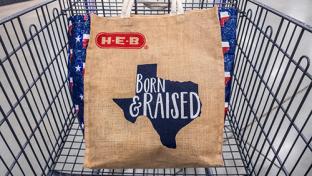Americans Think Grocers’ Profits Are 14X Higher, Inflation Twice as High as in Reality

According to customer data science company dunnhumby, Americans believe that grocery retailers are earning a 35.2% net profit margin – 14 times higher than grocers’ actual net profit margin average of 2.5% – and that food-at-home inflation is 24.3%, double the annual rate reported by the U.S. Bureau of Labor Statistics. These findings appeared in the latest iteration of the dunnhumby Consumer Trends Tracker (CTT), part of the dunnhumby Quarterly, a strategic market analysis of key retail themes, with the third edition focusing on navigating uncertainty.
“In this latest wave of our CTT study, we found that retailers are in a precarious position with their brand perception, since customers are vastly overestimating grocers’ store profit margins and inflation rates, while they themselves are battling food prices,” noted Matt O’Grady, president of the Americas at dunnhumby, whose U.S. office is in Chicago. “Retailers need to show they are empathetic to customers through their prices, their rewards/loyalty offers and with messaging to best support shoppers during these challenging financial times.”
[Read more: "H-E-B Topples Amazon as Top U.S. Grocery Retailer"]
The study’s key findings include the following:
- Inflation concerns are influencing customer sentiment. When survey respondents were asked why customer sentiment is the lowest in 50 years, consumers replied by a five-to-one margin that inflation is the reason, with COVID coming in a distant second. When asked about 2023, just 22% of respondents predicted that inflation and the state of the country would get better. Forty-seven percent predicted that things would improve three years from now. Over a five-year period, 54% of consumers are optimistic that their own finances and the state of the country will get better.
- Younger shoppers are the most optimistic, but only in the short term. For 2023, 31% of consumers age 18-34, believe that their finances and the state of the country will get better, versus just 13% of consumers older than 65. Over three- and five-year timeframes, however, there were no significant differences by age.
- Food insecurity is still a problem. Thirty-one percent of households said that they’ve skipped or reduced meals for financial reasons, while 39% of respondents younger than 44 have skipped or reduced meals. Further, households with children at home are 8% more likely to do so than adult-only households. The highest numbers came from consumers living in Idaho, Oklahoma, Arkansas, Tennessee and West Virginia, where more than 40% have skipped or reduced meals in the past year. Conversely, consumers living in Washington, Minnesota, Michigan, Massachusetts and Maryland reported the lowest numbers, with only about 20% having skipped or reduced meals in the past year.
- Despite slight improvement, most consumers are still struggling financially. Although no state is immune, the states with the highest rates of financial insecurity (75%) are Oregon, Oklahoma, Louisiana and West Virginia. The states with the lowest rates of financial insecurity (45%) are Minnesota, Wisconsin, Maryland and Delaware.
- Consumers want easy-to-shop and more convenient e-commerce solutions. Eighty-one percent (up 4%) of consumers said that easy-to-shop websites and apps are important to them and 78% (up 4%) said that they want retailers to offer more convenient delivery and pickup time slots. For consumers age 55 and over, ease and convenience are even more important. In this age group, 84% said that easy-to-shop websites and apps are important to them, and 81% said that they want convenient delivery/pickup time slots. Families are 16% more likely to use a store’s app, and they have a 10% greater need for retailers to pick products as well as they would, compared with childless shoppers.
- Shoppers want retailers to help them make healthy choices. Forty-four percent of consumers said that it’s very or extremely important for retailers to help them make healthy choices, a 3% increase from the previous wave. Further, 48% said that they choose healthy foods while shopping (up 2%) and 40% read diet and nutrition information (up 2%), while 29% are buying products for a specific diet when they shop. The top five diets in the United States, as cited in the survey, are 1) Keto, 2) low-carb, 3) low-sugar, 4) vegetarian and 5) gluten-free.
For the study, dunnhumby interviewed 6,012 consumers, representative of the U.S. grocery shopper nationwide. The online interviews for Wave 1 were conducted in April 2022, Wave 2 in July 2022, and Wave 3 in November 2022. About 2,000 individuals were interviewed for each wave of the study. The CTT aims to uncover shopper needs, perceptions and behavior over time, and to complement dunnhumby’s Retailer Preference Index, which measures the strength of retailers’ customer value proposition.







